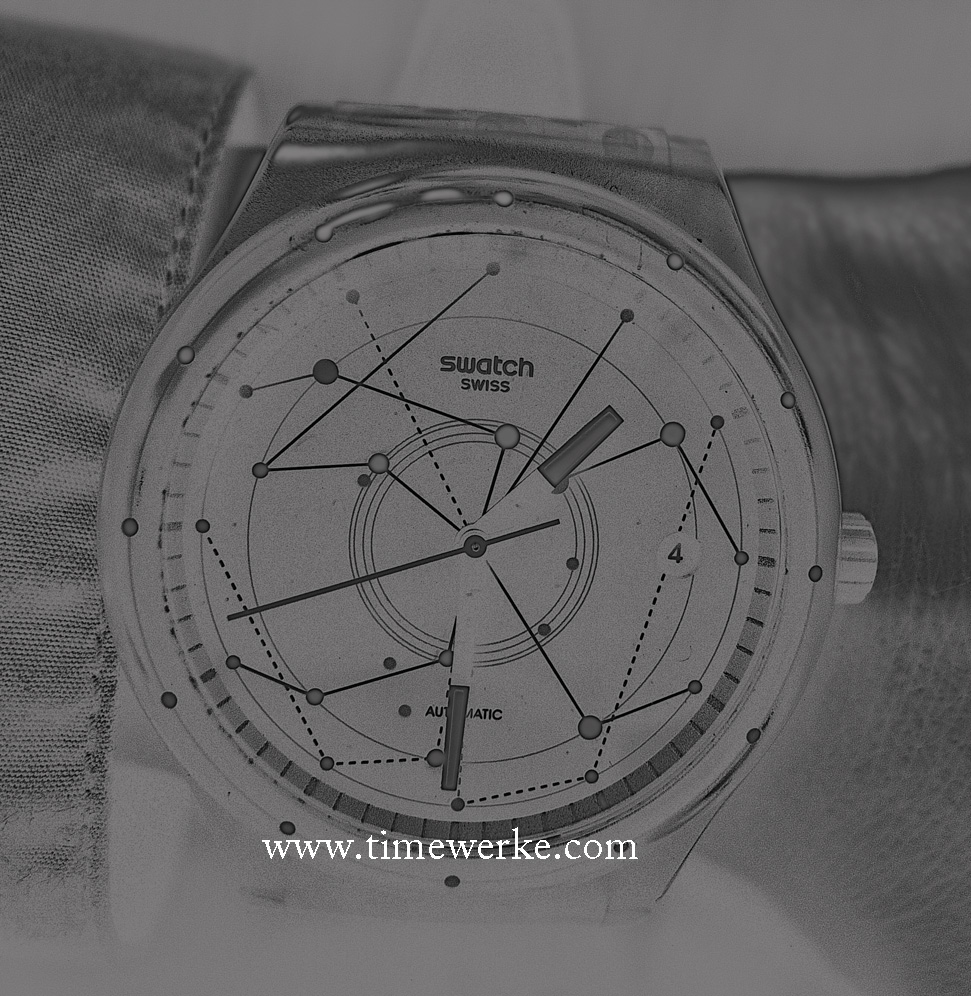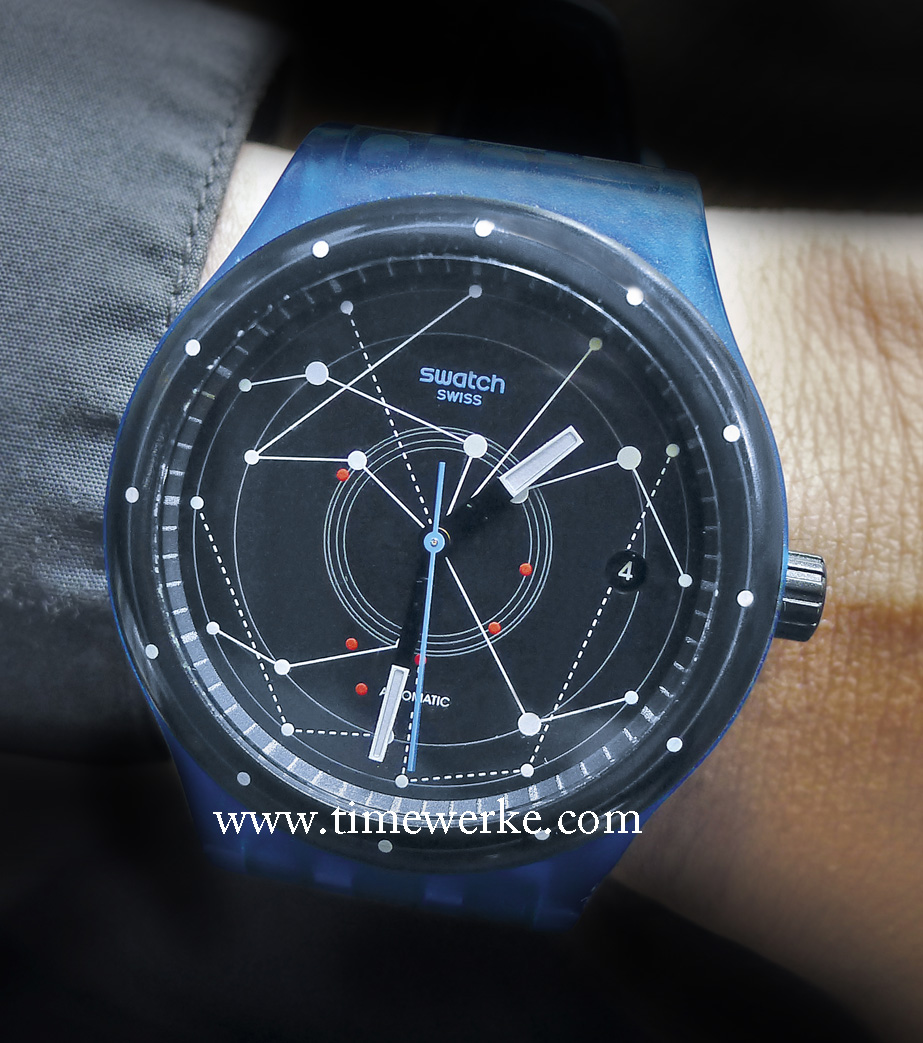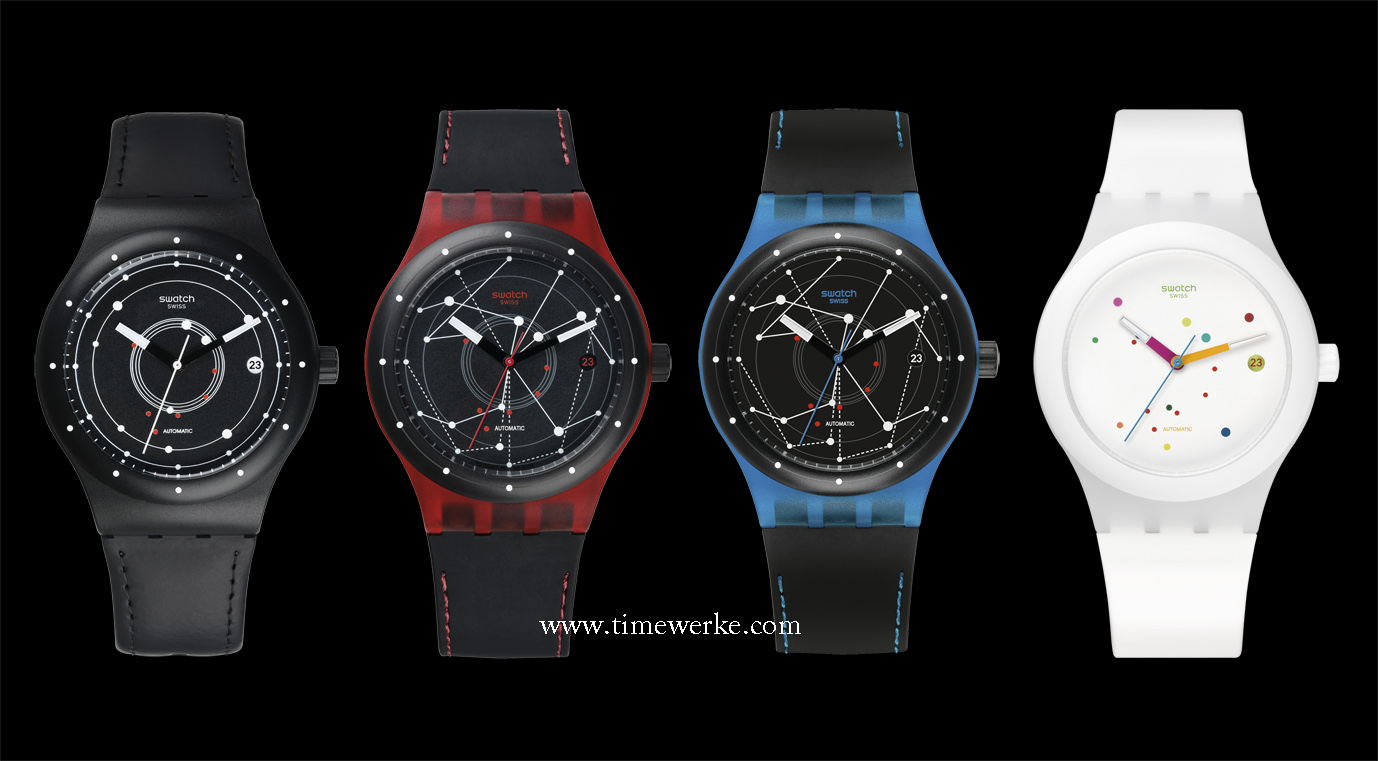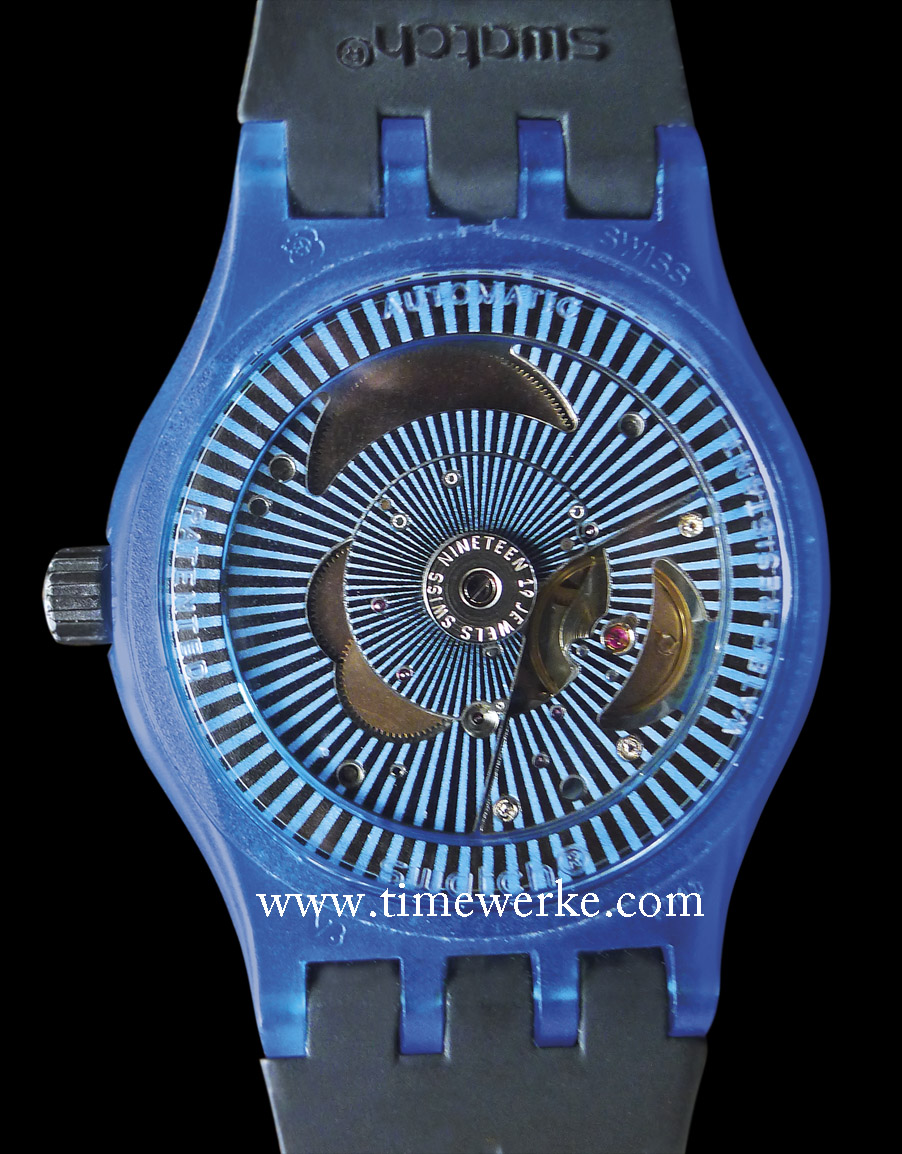
In 1983, Swatch made the first plastic quartz watch with a fully-automated assembly line. What about mechanical watches? Can a mechanical watch be fully assembled on an automated production line? Is this an abstraction? Image: © TANG Portfolio. Elfa / Timmy
Is the complete assembly of a mechanical watch on a fully-automated production line an abstraction?
At this juncture, it is good to recall that just over 30 years ago, Swatch produced a simplified quartz wristwatch comprising 51 component parts on a fully-automated assembly line. The result was affordable Swiss-made watches.
After 30 years, progress would have been made in watchmaking technology and surely, it would not be too much to ask for a mechanical wristwatch put together on a fully-automated line?
In 2013, Swatch proved itself, as it did before in 1983. The complete assembly of a mechanical wristwatch on a fully-automated line became a reality when the Sistem51 mechanical wristwatch debuted at the 2013 BaselWorld annual watch fair. Development time took less than two years.

The assembly of a mechanical wristwatch on a fully-automated production line became a reality in 2013, the 30th anniversary of the Swatch watch (1983 to 2013) with the launch of the Swatch Sistem51. This is just one face of reality: the Swatch Sistem51 – Sistem Blue (SUTS401). Photo: © TANG Portfolio. Elfa / Timmy
The Swatch Sistem51 is assembled fully under clean-room conditions and its operations take place over a 20-metre long automated production line.
This mechanical self-winding wristwatch is given a numeral to its name because it is made up of 51 components, the same number of parts that went into the original Swatch quartz wristwatch of 1983.
The movement of the Swatch Sistem51 is made of ARCAP, an alloy of copper, nickel and zinc. The 51 components that make up the automatic movement result in five separate modules that are welded together as one and are secured with a single screw that can be seen on the case back.
The components of the Sistem51 are hermetically sealed within the case which means “enemies” like dust or moisture cannot cause lapses in operating performance.
For a start, four different models of the Swatch Sistem51 are offered: Sistem Black (SUTB400), Sistem Red (SUTR400), Sistem Blue (SUTS401) and Sistem White (SUTW400).

The first generation Swatch Sistem51 introduced in 2013. From left-to-right: Sistem Black (SUTB400), Sistem Red (SUTR400), Sistem Blue (SUTS401) and Sistem White (SUTW400). Each priced at CHF150 or SGD209, these historically-significant self-winding wristwatches feature 90 hours of power reserve and a date display. Note the six red dots on each dial – these are directly above the six jewels (out of a total of 19) in the ARCAP movement. Click on the image for a better view. Photo: © Swatch
These are the faces of the Sistem51 and not only do they tell time, they also hint of what is behind this mechanical watch.
The clues are six red dots on the dials for they indicate exactly where just six of the jewels are in the mechanical movement. There are a total of 19 jewels used in the Sistem51 movement.
Flip the watch over and apart from the balance wheel, what is prominent is the screw at the centre of the case back. This is the central screw that secures all five modules of the movement.

The back of the Swatch Sistem51 tells the story. Note the central screw that secures all five modules of the movement. There is no regulator for the escapement in this mechanical movement and the rate of accuracy is set at the factory through the use of laser and precision is between +/- 7 seconds a day. Photo: © TANG Portfolio. Elfa / Timmy
The back tells the story – a real story of how mechanical wristwatches can be fully assembled on an automated production line.
There is no regulator for the escapement in this mechanical movement made of ARCAP featuring 90 hours of power reserve. The rate of accuracy is set at the factory through the use of laser and precision is between +/- 7 seconds a day.
Each of the current four historically-significant Swatch Sistem51 timepieces are priced at CHF150 (Swiss francs) or SGD209 (Singapore dollars) each.
This is still affordable considering that this is a Swiss-made mechanical wristwatch (just as it was 30 years ago when the first Swatch watches were initially priced at CHF39.90 and CHF49.90 before being subsequently fixed at CHF50 for standard models).
For a Swiss-made automatic watch with 90 hours of power reserve, there is no competition for the Sistem51 at such a price point, to the best of our knowledge.
We therefore reiterate our earlier call that this is a highly recommended “must-have” Swatch watch for fans of the brand and those who are looking for an artistic, simple, reliable, fuss-free mechanical wristwatch. Refer to the May 2013 TimeWerke.com article: SWATCH Sistem: Simplified and innovative.
What is also noteworthy is the fact that the oscillating weight and visible surfaces of the five movement modules are printable, highlights the brand.
This paves the way for future models that can be creatively enhanced with colourful and lively art, as has been the case for the success of Swatch over the past 30 years.
This reminds us of what Magnum photographer Bruce Gildens once said: “Black-and-white is an abstraction; colour is the reality.”


